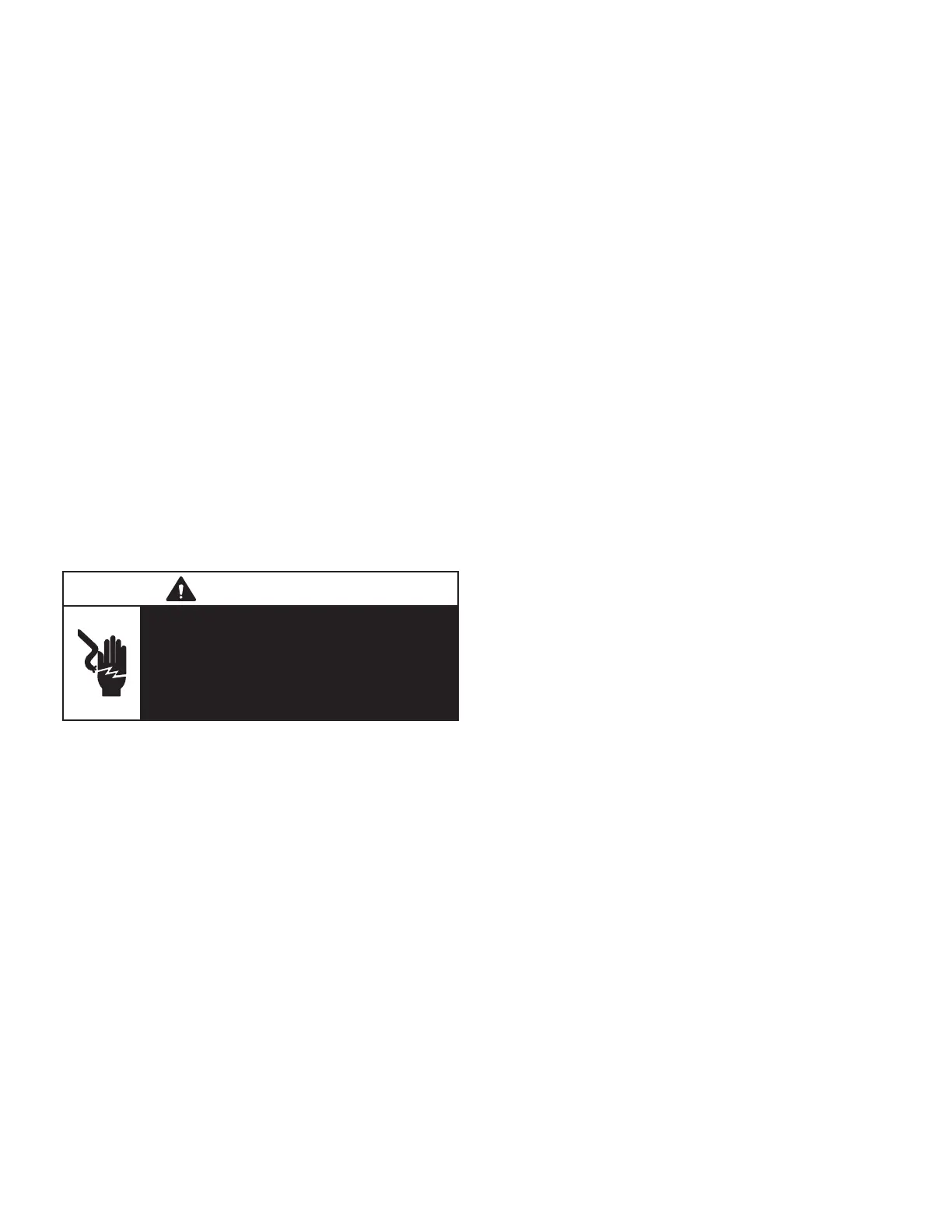Page 38
5-Proper Gas Flow
To check for proper gas flow to burners, determine Btuh in
put from unit rating plate or the gas heating capacity in the
SPECIFICATIONS tables. Divide this input rating by the
Btuh per cubic foot of available gas. Result is the number of
cubic feet per hour required. Determine the flow of gas
through gas meter for two minutes and multiply by 30 to get
hourly flow of gas to the burners.
NOTE - To obtain accurate reading, shut off all other gas
appliances connected to meter.
6-Inshot Burner
Burners are factory set for maximum air and cannot be ad
justed. Always operate unit with access panel in place. A
peep hole is furnished in the heating access panel for flame
viewing. Natural gas should burn basically blue with some
clear streaks. L.P. gas should burn mostly blue with some
clear yellow streaks.
Figure 26 shows the burner assembly.
1- Turn off power to unit and shut off gas supply.
2- Remove screws holding the burner support cap.
3- Slide each burner off its orifice.
4- Clean and reassemble (reverse steps 1-3).
5- Be sure to secure all wires and check plumbing.
6- Turn on power to unit. Follow lighting instructions at
tached to unit and operate unit in heating mode. Check
burner flames. They should be blue with yellow
streaks.
FIGURE 26
TYPICAL GAS BURNER ASSEMBLY
BURNERS
(Typical)
ORIFICE
SENSOR
BURNER
SUPPORT
BURNER
SUPPORT CAP
7-Spark Electrode Gap
The spark electrode assembly can be removed for inspec
tion by removing two screws securing the electrode assem
bly and sliding it out of unit.
For proper unit operation, electrodes must be positioned
and the spark gap set correctly.
Spark gap may be checked with appropriately sized twist
drills or feeler gauges. Disconnect power to the unit and re
move electrode assembly. The gap should be between
0.125” +
0.015” (3.2 mm + .4 mm). See figure 21.
8-Heat Exchanger
To Access or Remove Heat Exchanger From Unit:
1- Turn off gas and electric power.
2- Remove access panel(s) and unit center mullion.
3- Remove gas valve, manifold assembly and burners.
4- Remove combustion air inducer and flue box. Pay
careful attention to the order in which gaskets and ori
fice are removed.
5- Support heat exchanger (to prevent it from falling when
final screws are removed.)
6- Remove screws supporting heat exchanger.
7- To install heat exchanger, reverse procedure. Be sure
to secure all wires and check plumbing and burner
plate for airtight seal. Screws must be torqued to 35 in.‐
lbs. to ensure proper operation.
9-Flame Sensing
Flame current is an electrical current which passes from the
ignition control through the sensor electrode during unit op
eration. The current passes from the sensor through the
flame to the ground electrode (located on the flame elec
trode) to complete a safety circuit. The electrodes should
be located so the tips are at least 1/2” (12.7 mm) inside the
flame envelope. Do not bend electrodes. To measure flame
current, follow the procedure on the following page:
NOTE-Electrodes are not field adjustable. Any alter
ations to the electrode may create a hazardous condi
tion that can cause property or personal injury.
1- Disconnect power to unit.
2- Remove lead from sensing electrode and install a
0-50DC microamp meter in series between the sensing
electrode and the sensing lead.
3- Reconnect power and adjust thermostat for heating de
mand.
4- When flame is established, compare reading to table
8. Do not bend electrodes.
5- Disconnect power to unit before disconnecting meter.
Make sure sensor wire is securely reconnected before
reconnecting power to unit.
TABLE 8
Manufacturer
Nominal Signal
Microamps
Drop Out
JOHNSON 0.5 - 1.0 .09
NOTE-If the meter scale reads 0, the leads are re
versed. Disconnect power and reconnect leads for
proper polarity.

